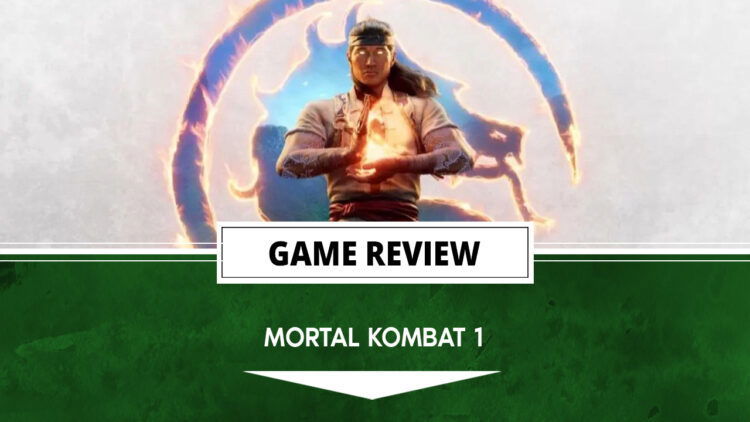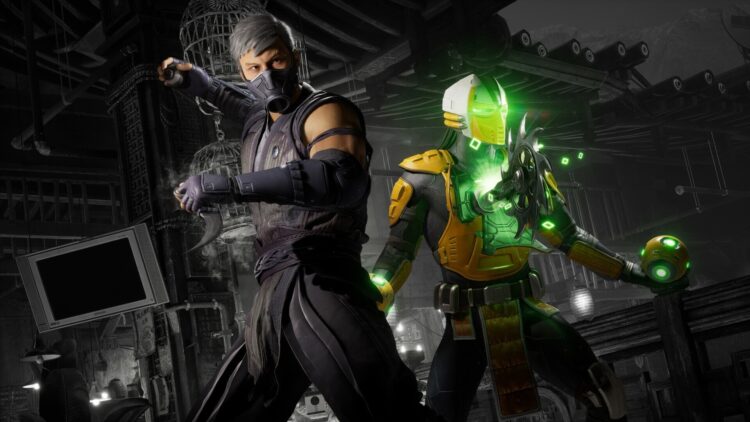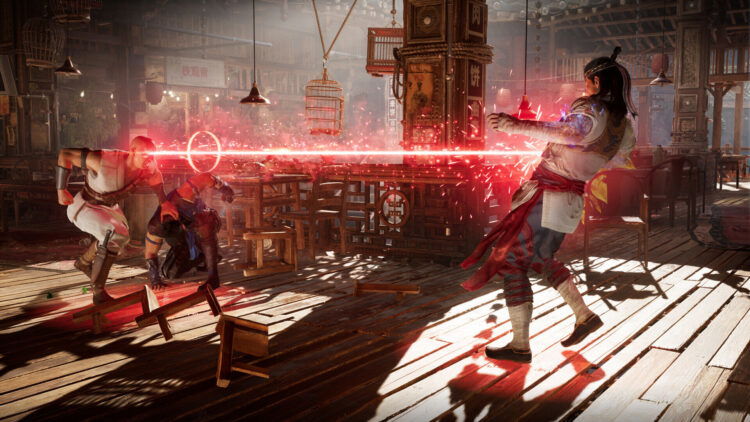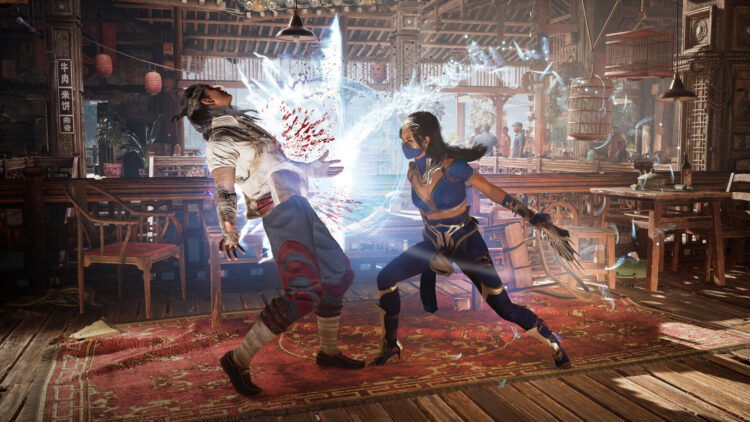I know, I know. Mortal Kombat 1 dropped in September, and here we are in October to do our review about it. I am not going to lie, but we didn’t get access to a review copy and had to rely on a retail copy of the game in order to do this review, and as the reviewer, I have also been very busy in a monumental moment in Australia’s political history and have been very busy, too busy. However, since we are under no obligation to provide the review ASAP, I took my time and played Mortal Kombat 1 as a player first and a reviewer second.
So how does Mortal Kombat 1 compare in an era where Street Fighter 6 innovated so much in a single iteration? Does the other main player in the Fighting Game Community still hold up to the levels of ultra-violence that Mortal Kombat 11, Mortal Kombat X, and Mortal Kombat have defined since the original timeline was restarted with Mortal Kombat Armageddon? The only way is to strap yourself in and see if your might is tested enough to give Mortal Kombat 1 the credit the franchise has earned over the decades… or is it one reset too many?
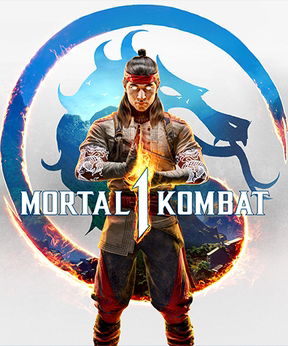
Platform(s): Nintendo Switch, PlayStation 5 (review), Windows, & Xbox Series X/S
Developer: NetherRealm Studios
Publisher: Warner Bros. Games
Game Type: Fighting
Mode(s): Single-player, multiplayer
Release Date: September 19, 2023
Here We Go Again… (Story)
Mortal Kombat 1 Story Summary – SPOILERS
[toggler title=”Click to read story summary” ]After defeating Kronika and Shang Tsung, Fire God Liu Kang uses Kronika’s Hourglass to recreate the universe before relinquishing control of it to Geras to become Earthrealm’s protector. He forms a tenuous alliance with Outworld under the auspices of continuing the Mortal Kombat tournaments. In the present, a powerless Shang Tsung attempts to make a living in Outworld, posing as an elderly sorcerer selling fake cures for the Tarkat virus, which has already killed many people. After he is exposed and robbed by an angry mob, Shang Tsung is approached by a mysterious individual who reveals his potential to become a great sorcerer and that unseen forces have been working against him to prevent this. In Earthrealm, Liu Kang recruits farmers Kung Lao and Raiden, struggling actor Johnny Cage, and former Yakuza member Kenshi Takahashi to compete in the latest tournament, with Raiden eventually being chosen as Earthrealm’s champion and winning the tournament.Geras meets with Liu Kang, informing him Shang Tsung has regained his abilities as a sorcerer and is serving as an advisor to Outworld’s Empress Sindel. Liu Kang tasks Kenshi, Kung Lao, and Johnny with investigating Shang Tsung’s activities. They travel to Outworld’s wastelands, where they encounter Tarkatans, victims of the Tarkat virus, and witness Shang Tsung extracting bone marrow from the Tarkatans’ leader Baraka. The Earthrealmers intervene, though Shang Tsung escapes to his laboratory. With Baraka’s aid, the group locates the lab and stops Shang Tsung from seemingly infecting Outworld’s crown princess, Mileena, with the Tarkat virus. However, Mileena attacks them, blinding Kenshi before Shang Tsung injects her with a serum to control her Tarkat symptoms. Her sister, Princess Kitana, and General Shao arrive to capture the Earthrealmers. Shang Tsung misleads them before convening with his ally, Quan Chi. The Earthrealmers are taken to the Flesh Pits, but escape with Reptile’s help and encounter Ashrah, who reveals Quan Chi is building devices capable of stealing souls on a massive scale. Though Quan Chi uses several souls to create Ermac, the group defeats them and destroys one of the soul stealers before all except for Baraka return to Earthrealm to warn Liu Kang.
Liu Kang orders Lin Kuei warriors Sub-Zero, Scorpion, and Smoke to destroy the soul stealers and capture Shang Tsung, but they are captured. Shang Tsung sways Sub-Zero to his side by promising him access to the undead Dragon Army, though Scorpion breaks free and escapes with Smoke. After investigating, Geras informs Liu Kang that the benefactor most likely hails from a parallel timeline.
With Li Mei’s help, Liu Kang travels to Outworld to provide Sindel and her daughter’s evidence of Shang Tsung and Quan Chi’s intent to conquer Earthrealm and Outworld as well as reveal his influence on the current timeline’s events. General Shao attempts to ambush the group but fails and are soon captured. The group arrives at the location of the soul stealers; Ermac attacks them, but Mileena defeats him, allowing the soul of her father and Sindel’s husband, Emperor Jerrod, to manifest and take control of Ermac’s body. The soul stealers are destroyed, and the sorcerers are confronted. The two are joined by their benefactor, “Damashi”, who reveals themselves as Shang Tsung; the same one that Liu Kang fought and seemingly defeated prior to the creation of the new timeline. Titan Shang Tsung reveals that the battle for the Hourglass fractured time, creating a separate timeline where he defeated Kronika and Liu Kang and became a Titan. Intending to absorb Liu Kang’s timeline, he summons an army of revenants. Liu Kang’s group narrowly drive off Titan Shang Tsung’s, though Sindel is fatally wounded and appoints Mileena her successor before dying, with Jerrod absorbing her soul into Ermac.
Forming a temporary alliance with their Shang Tsung and Quan Chi, the former proposes that there could possibly be more timelines, leading to Geras revealing that he had stored Liu Kang’s power in case of a dire situation. As the others go to destroy the Dragon Army, Liu Kang regains his power as Keeper of Time and reunites with his friends from the former timeline to recruit forces for the upcoming battle. Titan Shang Tsung sees this and summons an army of their evil counterparts. Following a grueling battle, Liu Kang’s group prevails, allowing him to erase Titan Shang Tsung and his timeline from existence. After returning everyone he recruited to their native timelines, Liu Kang returns to his own to congratulate his champions over dinner before departing to assist Scorpion and Smoke in founding the Shirai Ryu clan and preparing Earthrealm for future conflicts.
In a mid-credits scene, alternate-timeline warriors led by Titan Havik observe the aftermath of Liu Kang and Titan Shang Tsung’s battle. Feeling it ended too quickly, Titan Havik vows to start a new, longer battle.
Invasions
With the revelation that multiple timelines co-exist with each other, Liu Kang secretly keeps watch over several of them to defend his own.
Season of the Spectre
An alternate Scorpion named Hanzo Hasashi travels to multiple timelines to find one in which his wife Harumi is still alive and single so he can reunite with her and rebuild the Shirai Ryu. Following several failed attempts, he travels to Liu Kang’s timeline and finds a living Harumi, only to learn she is married to her version of Scorpion. An infuriated Hanzo tries to destroy the timeline, only to be defeated. Liu Kang subsequently sends him to a timeline where he died, and Harumi became Scorpion. The pair bond over their shared losses and join forces to fight her version of Quan Chi.[/toggler]
Story Review – Some Vague Spoilers
It’s amusing to see that Mortal Kombat 1 is the beginning of the THIRD timeline for this decades-old series. Stories are not uncommon for Mortal Kombat 1 in general since it had a basic outline in 1993’s Mortal Kombat 1, then expanded on that story through the rest of the series, leading to moments like the reveal of the Elder God Shinnok, The Deadly Alliance between Shang Tsung and Quan Chi, the death of main character Liu Kang, the arrival of the Dragon King Onaga, all the way up to Mortal Kombat 11 where it became the end of all things (and then the follow up to the end of things with Mortal Kombat 11: Aftermath). Then there was Timeline 2, where events were altered thanks to the original Raiden reaching into the past and misguiding Timeline 2 Raiden into changing things for the worse, leading to a confrontation with the Mistress Titan of time herself… Then she was defeated by Liu Kang, now the God of Fire and Thunder, leading to the reset to this timeline.
To be honest, this timeline starts out in a very confusing way. We see familiar characters like Raiden (No longer a God), Kung Lao (Still an arrogant fighter/farmer), Scorpion (Now Kuai Liang, who was the second Sub-Zero), Sub-Zero, Smoke, and many others in new, more peaceful roles or in positions that will either switch their known alliances (Baraka is a hero in this timeline) from what we previously knew. While all this gives the story of Mortal Kombat 1 a lot of new and interesting character development and story moments, you keep a feeling of unease as you work your way through 16 chapters of the story leading to a finale that is just so crazy and I can’t even begin to think about it.
When you think the story is done, you have the Invasion mode, which is a follow-up to the main story mode where you get some “What If…?” style scenarios which gives you the feeling that we might end up with seasonal content (to buy) in the future. This is something that I welcome, as Mortal Kombat 1 does story modes in such a way that you can’t help but want to play the next part as soon as possible. Believe me, it was hard to stop playing on a nightly basis.
The only complaint I have with the story, or more the mode itself, is that it is very hero-based. I think it needed more pick-a-side moments like Injustice 2 had, or even some time as the villains in the story, and play out their success moments in the story so we can play more of the whole roster instead of about 50% of it. That being said, the story is well worth the playthrough, with a lot of good moments included as well as bad ones.
Oh, I Can See What They Ate for Lunch (Graphics)
Ok, I’m going to come out straight out the gate and say what everyone already knows by now: The Switch version is trash when it comes to graphics. Not only does Mortal Kombat 1 run at a stuttering 45 fps, but the graphics are of such low quality on the rapidly aging handheld that it looks like an Alpha build rather than a finished build. Textures are missing from the characters, and backgrounds are washed out (See for yourself in the video here). It is shocking to see how far the Switch has fallen in terms of performance and graphical power since Mortal Kombat 11 came out with a decent port a few years ago.
However, if there is one thing that I’ve been impressed with since I first imported Mortal Kombat on the PS3 all those years ago (Which was the beginning of my journey into the world of gaming journalism), it’s how insane the graphics that NeatherRealm studios can produce have become. Not only has the creativity of the gore-filled fatality finishers gone well beyond what is possible in a biological sense, but also how detailed they have become. With some of the fatalities, X-Ray/Fatal Moves, brutalities, and just general moves showing off everything both outside and inside the human and non-human body in such extreme detail that you could use Mortal Kombat 1 in biology class to point out how the human body works.
A huge part of what makes Mortal Kombat 1 work, at least with the story, is the use of backgrounds. The backgrounds have been on the improvement since Mortal Kombat on PS3 with more and more things being added in high detail. If there is one thing I beg you to do, spend some time in the game’s Photo Mode and explore the details in the backgrounds of each fighting stage. You never know what you will discover by watching the places that most people do not pay attention to these days.
Push Buttons, Kick Butt (Gameplay)
Mortal Kombat 1 is not a complex game; the series, as a whole, never has been. The controls have not changed much since 1993. You still have the Right/Left Punch/Kick buttons; you add movement controls to those buttons for special moves and combos, leading to a few seconds input timer at the end of the second round where you get a chance to input a fatality code which leads to a great pre-done cinematic moment.
Okay, okay, I’m giving Mortal Kombat 1 not enough credit here. We’ve had some innovations added to the game since 1993. We have the brutality system, which allows you to combo into a move that works as a mini-fatality. There are also the x-ray moves which are worked into the Fatal Blow system, which activates when you are below 20% health, giving you an ultra-powerful move to help level the playing field. You can also boost the damage of some moves by pushing R2/RT when your meter is full enough, which can also alter moves to do different effects and help with combos.
Then there is the Kameo character system. This additional character works in the same way Assist Characters did in Marvel vs Capcom. By pushing R1/RB, you summon an extra character to do an offensive, defensive, or neutral move. These characters can also be summoned to help out with a combo, break a combo, do a throw, assist in a Fatal Blow, and even have their own fatalities to do, giving them one of the most insane loadouts I’ve seen in a fighting game in years.
While I do give a lot of praise to Mortal Kombat 1 for being innovative in a small way, I think that when you compare Mortal Kombat 1 gameplay to the changes that Street Fighter 6 brought into their game, Mortal Kombat 1 does feel somewhat outdated and sluggish in its gameplay. There isn’t the freedom to combo in fights, with the old dial-a-combo system still in full effect in Mortal Kombat 1. The costumes return again, a holdout from Injustice 2, which wasn’t all that great to begin with and still feels like the only reason it exists is to sell in-game currency and costume packs.
Mortal Kombat 1 for Days (Replayability)
If there is something Mortal Kombat 1 has taken to heart, it’s keeping things simple with its game modes but also having a lot to do at the same time.
On the single-player side, you have the usual arcade-style ladder mode where you fight against opponents in order to see the ending to their story play out on screen in single-image text-filled moments, then you have the main cinematic story mode, which you can read about above, you also have Invasions where you get to see different stories play out as mini-episodes, and then you have the online mode with ROLEBACK NETCODE!! All hail the glory of Rollback Netcode!!
As many of you might know, as an Australian, having a Rollback Netcode is a godsend for us. Since, once again, there are no servers locally for Australians to connect to, we have to rely on Rollback Netcode to give us some sort of balance when it comes to connecting to matches online… Though it doesn’t stop me from getting my ass kicked due to a lack of knowing 100 button combos and spamming the same attack over and over again.
Outside of going online, you have the (what I assume) seasonal content in the Invasion mode, where you will be playing new mini-stories. There’s also the traditional Tower mode where you play your way through Easy, Normal, Difficult, and Unlimited/Survival Towers, fighting 2-on-2 fights in order to unlock each character’s story ending. While this gives a fair amount of content, you know that it will not last too long, and online mode will be where you will be pushed to spend most of your time.
Mortal Kombat 1 Third Timeline’s a Charm (Closing)
With this year being the 30th anniversary of the Mortal Kombat franchise, it seems fitting that Mortal Kombat 1 takes things back to the beginning with its story and mechanics. Sure, Mortal Kombat 1 has added some new things to its core gameplay with cameo fighters, but everything else is a staple for Mortal Kombat games over the last 30 years… Which is starting to become a flaw with the games. Street Fighter 6 comes out with a whole heap of new mechanics and added new ways to play, but Mortal Kombat 1 feels stuck in the past, unable to evolve beyond its original state.
The other issue comes from the amount of in-game currency purchases that are shown to you, enticing you to buy premium koins to get all the good-looking cosmetic items… This is going to lead to a bunch of costume packs being available for real money. Hell, I even bought an additional $50 worth of costumes/characters on day one because they weren’t included in the $150 Platinum Edition of the game.
On the other foot, Mortal Kombat 1 is the smoothest and most interesting version of Mortal Kombat to come out in a long time. From a whole universe refresh with characters having new designations and origins to the combat becoming one of the more straightforward versions of the system to date. I don’t think there is going to be anyone out there who cannot pick up Mortal Kombat 1 and start playing from the beginning and make themselves feel like they are a slaughtering god.
Review Disclosure Statement: Mortal Kombat 1 was bought by the reviewer for review purposes. For more information on how we review video games and other media/technology, please go review our Review Guideline/Scoring Policy for more info.
Summary
Mortal Kombat 1 brings the idea of a whole new universe into light with an amazing, but really fast-paced, story mode. However, the rest of the game feels like Mortal Kombat as a franchise has stagnated in terms of gameplay with nothing really innovating things outside of the cameo fighter system. Then we have the impending microtransaction additions that you know are coming, and I hate those with a passion.
Pros
- Great new story
- Kameo Fighters are fun
- Gorey as ever
Cons
- The gear system returns
- Gameplay feels outdated
- You know microtransaction DLC packs are coming


